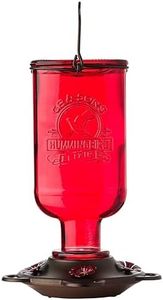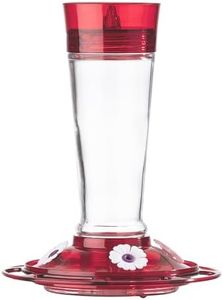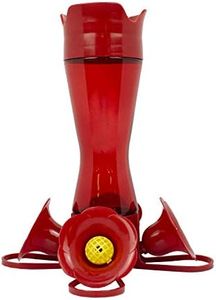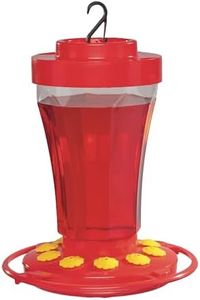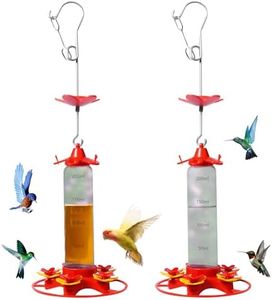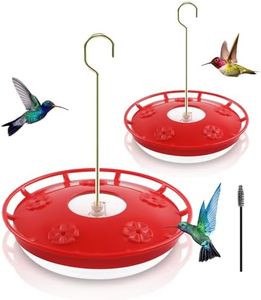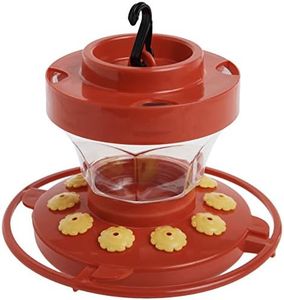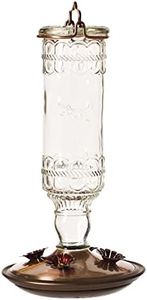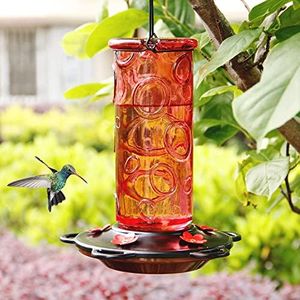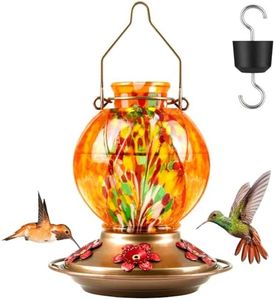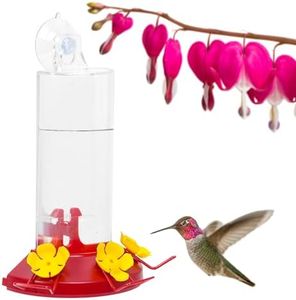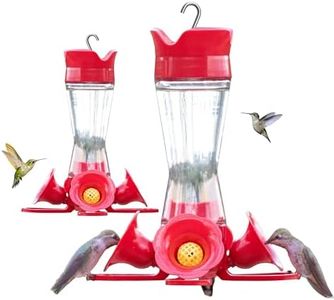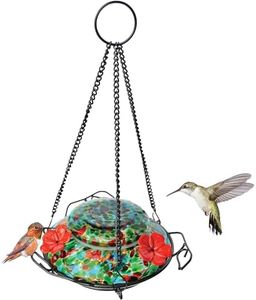We Use CookiesWe use cookies to enhance the security, performance,
functionality and for analytical and promotional activities. By continuing to browse this site you
are agreeing to our privacy policy
10 Best Hummingbird Feeders
From leading brands and best sellers available on the web.By clicking on a link to a third party's website, log data is shared with that third party.
Buying Guide for the Best Hummingbird Feeders
Choosing a hummingbird feeder can make a real difference in how easy it is to attract these beautiful birds to your yard and in how much work it takes to keep them coming back. The ideal feeder matches your environment, yard size, and how often you want to refill and clean it. Paying attention to a few important specifications will help you pick a feeder that fits your needs best, making feeding hummingbirds enjoyable and hassle-free.CapacityCapacity refers to how much nectar the feeder can hold. This is important because you want enough to satisfy the visiting hummingbirds but not so much that the nectar spoils before it's gone. Feeders come in small (under 8 ounces), medium (8-16 ounces), and large (over 16 ounces) capacities. If you see only a few birds now and then, a small feeder works best as the nectar will stay fresh; if you have a lot of hummingbirds visiting, a larger feeder may save you the hassle of constant refilling. Match your choice to the number of daily visitors and how often you can maintain the feeder.
Number of Feeding PortsThe number of feeding ports means how many birds can drink at once. More ports (holes for drinking) will attract more birds and allow several to feed together. If you have a busy yard with frequent hummingbird visits, pick a feeder with at least 4 to 6 ports. For quiet yards or beginner setups, a couple of ports may be enough. The right amount is based on how many birds you expect or want to encourage to come at the same time.
Ease of CleaningFeeders need to be cleaned regularly because nectar can spoil, and mold can harm the birds. Look for designs with simple shapes and wide openings, as these make cleaning quick and thorough. Complicated shapes or models with lots of small parts are harder to care for and may discourage you from regular cleaning. Choosing an easy-to-clean feeder ensures your birds stay healthy and your feeding hobby stays manageable.
MaterialFeeders are usually made from plastic, glass, or occasionally metal. Plastic ones are light and less likely to break but can become cloudy and crack in the sun. Glass feeders look attractive, keep nectar fresher, and are more durable in the long run, but they're heavier and may break if dropped. Choose based on whether you prefer durability and appearance (glass) or lighter weight and easy handling (plastic).
Insect GuardsInsect guards are features like moats or built-in barriers that keep ants, bees, and wasps away from the nectar. Without these guards, unwanted bugs may take over the feeder or drive hummingbirds away. Some feeders have built-in ant moats or bee guards, while others require separate accessories. If insects are a problem in your area or you notice previous feeders getting swarmed, prioritize feeders with these protections.
Mounting OptionsMounting options describe how and where you can hang or place the feeder. Some are designed to hang from a branch or hook, while others can be attached to a window or mounted on a pole. Your choice depends on your space—windows are great for close-up viewing, hanging models are most common for gardens, and pole mounts can keep feeders away from certain animals. Think about where you want your birds and how visible you want the feeder to be.
